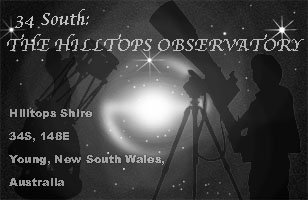Originally Posted by By Lauren Perkins/Beth Ridgeway, NASA, 27 Feb 2024.
A star system, located 3,000 light-years away from Earth, is predicted to become visible to the unaided eye soon. This could be a once-in-a-lifetime viewing opportunity as the nova ouburst only occurs about every 80 years. T Coronae Borealis, or T CrB, last exploded in 1946 and astronomers believe it will do so again between February and September 2024.
The star system, normally magnitude +10, which is far too dim to see with the unaided eye, will jump to magnitude +2 during the event. This will be of similar brightness to the North Star, Polaris.
Ref: https://blogs.nasa.gov/Watch_the_Skies/ ... ern-crown/
Position of T Cr B marked by the red circle.
Other designations
BD +26° 2765, HD 143454, HIP 78322,
SAO 84129, 2MASS J15593015+2555126
.
T Coronae Borealis (T CrB), is a recurring nova in the constellation Corona Borealis. It was first discovered in outburst in 1866 by John Birmingham,[11] although it had been observed earlier as a 10th magnitude star.[12]
Description
The light curve of T Coronae Borealis during the time surrounding its 1946 eruption, plotted from AAVSO data
T CrB normally has a magnitude of about 10, which is near the limit of typical binoculars. It has been seen to outburst twice, reaching magnitude 2.0 on May 12, 1866 and magnitude 3.0 on February 9, 1946,[13] although a more recent paper shows the 1866 outburst with a possible peak range of magnitude 2.5 ± 0.5.[14] Even when at peak magnitude of 2.5, this recurrent nova is dimmer than about 120 stars in the night sky.[15] It is sometimes nicknamed the Blaze Star.[16]
T CrB is a binary system containing a large cool component and a smaller hot component. The cool component is a red giant which is transferring material to the hot component. The hot component is a white dwarf surrounded by an accretion disc, all hidden inside a dense cloud of material from the red giant. When the system is quiescent, the red giant dominates the visible light output and the system appears as an M3 giant. The hot component contributes some emission and dominates the ultraviolet output. During outbursts, the transfer of material to the hot component increases greatly, the hot component expands, and the luminosity of the system increases.[6][8][17] [18]
AAVSO light curve of recurrent nova T CrB from 1 Jan 2008 to 17 Nov 2010, showing the pulsations of the red giant primary. Up is brighter and down is fainter. Day numbers are Julian day.
The two components of the system orbit each other every 228 days. The orbit is almost circular and is inclined at an angle of 67°. The stars are separated by 0.54
2016-present activity
On 20 April 2016, the Sky and Telescope website reported a sustained brightening since February 2015 from magnitude 10.5 to about 9.2. A similar event was reported in 1938, shortly before the 1946 outburst.[19] By June 2018, the star had dimmed slightly but still remained at an unusually high level of activity. In March or April 2023, it dimmed to magnitude 12.3.[20] A similar dimming occurred in the year before the 1945 outburst, indicating that it will likely erupt in the first half of 2024.
Source: Wikipedia https://en.wikipedia.org/wiki/T_Coronae_Borealis








